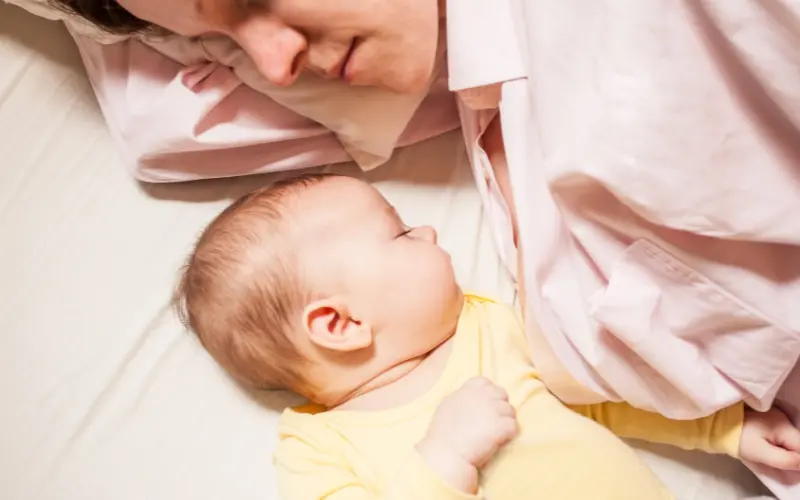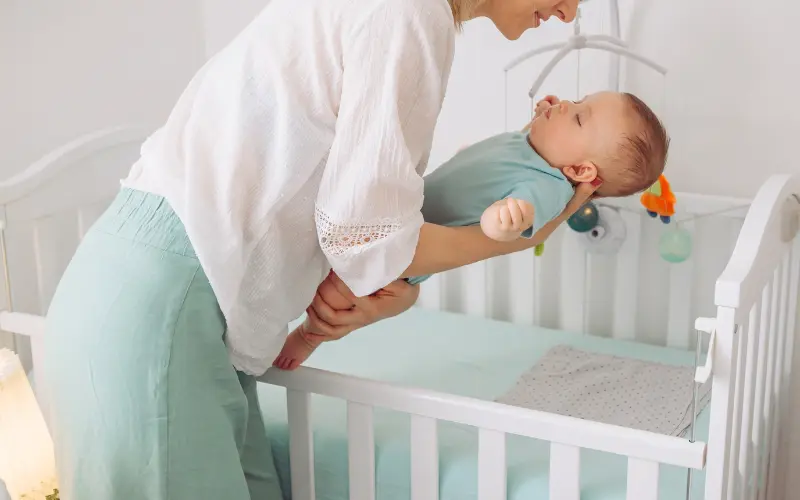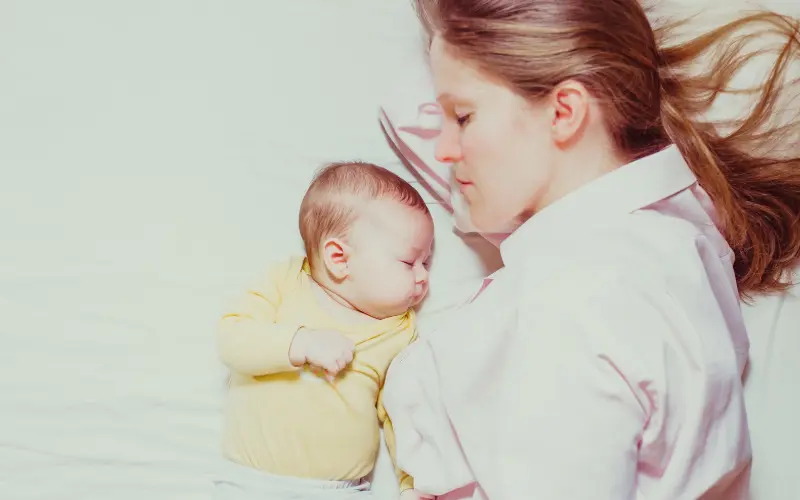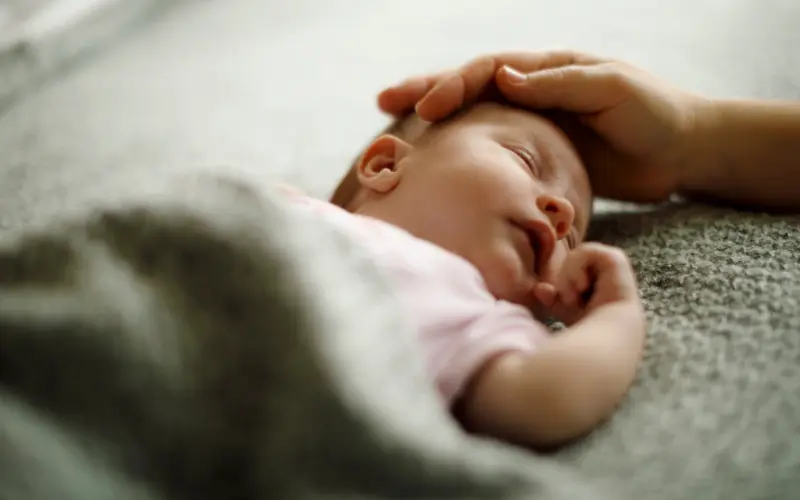Table of Contents
Safe Co-Sleeping Tips
Co-sleeping, when done with safety in mind, can offer parents and babies a unique bonding experience. While some parents opt for separate sleeping arrangements, others prefer to co-sleep for convenience, breastfeeding, or simply to be closer to their baby. However, ensuring that co-sleeping with your baby is safe is crucial to preventing any risks. In this guide, we’ll explore tips, guidelines, and product recommendations to help you practice safe co-sleeping. We’ll also suggest some of our top products from [your store] that can make this experience easier and safer.
For additional information on creating a safe sleep environment for your baby, consider visiting the CDC’s Safe Sleep page. This resource outlines essential practices to reduce the risk of Sudden Infant Death Syndrome (SIDS) and provides comprehensive guidelines for parents on safe sleep arrangements.
Understanding the Basics of Co-Sleeping With Your Baby

Co-sleeping refers to the practice of sharing a bed or sleeping space with your baby. This can include bed-sharing, where the baby sleeps in the same bed as the parent, or room-sharing, where the baby sleeps in their own crib but in the same room. While many parents choose co-sleeping for the closeness it provides, it’s important to do so with caution to minimize the risk of accidental harm, such as suffocation or overheating.
To make co-sleeping with your baby safer, consider using a co-sleeper or a bedside crib. Our Adjustable Bedside Sleeper is an excellent option as it allows your baby to sleep close to you while having their own safe space. This ensures that your baby is within arm’s reach for nighttime feedings but still protected from the risks of bed-sharing.
Key Benefits of Co-Sleeping
Co-sleeping can offer several benefits when done safely, including:
- Improved bonding: Sleeping close to your baby promotes emotional bonding and physical closeness.
- Convenience for breastfeeding: Nighttime feedings become much easier when your baby is right next to you.
- Better sleep for baby and parents: Some parents find that co-sleeping helps everyone get more sleep, as babies tend to wake less often when they are close to their caregivers.
However, to enjoy these benefits, it’s crucial to follow safe cosleeping guidelines.
Essential Safe Cosleeping Guidelines

When co-sleeping, safety should always come first. Here are some safe cosleeping guidelines to ensure that your baby is protected during the night:
- Use a firm mattress: A soft mattress increases the risk of suffocation. Ensure that your baby is sleeping on a firm, flat surface.
- Avoid loose bedding: Loose blankets, pillows, or sheets can pose a suffocation hazard. Instead, dress your baby in appropriate sleepwear and use a sleep sack like our Organic Cotton Baby Sleep Sack.
- No smoking, alcohol, or drugs: If anyone in the household smokes, drinks alcohol, or uses drugs, co-sleeping should be avoided as these factors can increase the risk of Sudden Infant Death Syndrome (SIDS).
- Keep the bed clear of heavy blankets and stuffed animals: These can cause overheating or accidental covering of the baby’s face.
Incorporating these safe cosleeping guidelines into your routine will help minimize risks while maximizing the benefits of co-sleeping.
Best Practices for Safe Co-Sleeping and Crib Sleeping Practices

For parents who prefer a hybrid approach, combining co-sleeping with crib sleeping can offer the best of both worlds. In this setup, babies sleep in their own crib, which is placed next to the parents’ bed. This allows for closeness without the risks associated with bed-sharing. If you choose this option, be sure to follow these safe co-sleeping and crib sleeping practices:
- Place the crib next to the bed: A crib like our Portable Baby Crib allows your baby to sleep in a safe space while still being close enough for you to reach them during the night.
- Ensure proper crib setup: The crib should have a firm mattress and no additional bedding or toys. Keep the crib environment minimal for maximum safety.
- Alternate between crib and bed-sharing: You can switch between having your baby in the crib and in the bed for night feeds or cuddling, ensuring you adhere to safe guidelines when bed-sharing.
By combining safe co-sleeping and crib sleeping practices, you can enjoy the benefits of co-sleeping without sacrificing safety.
Tips for Creating a Safe Co-Sleeping Environment

A safe sleep environment is essential for practicing safe co-sleeping. Here are some additional tips to help you create the safest possible co-sleeping arrangement:
- Sleep on your back: Always place your baby on their back to sleep, whether they are co-sleeping or in a crib. This position is the safest for reducing the risk of SIDS.
- Keep the room at a comfortable temperature: Avoid overheating your baby by maintaining a room temperature that feels comfortable for lightly clothed adults. If needed, use a fan to improve air circulation.
- Consider using a co-sleeping bassinet: Products like our Adjustable Bedside Sleeper allow you to have your baby within reach while ensuring they have a dedicated, safe sleep space.
- Avoid sleeping on couches or armchairs: These surfaces increase the risk of accidental smothering or falling.
By following these tips, you’ll be able to enjoy the closeness of co-sleeping with your baby while ensuring that safety remains a top priority.
Combining Co-Sleeping with Safe Sleep Practices

For many parents, the choice to co-sleep stems from a desire to keep their baby close. However, it’s important to remember that safety should come first. By incorporating safe cosleeping guidelines and combining them with safe co-sleeping and crib sleeping practices, you can reduce risks while still fostering a close connection with your baby.
Our Portable Baby Crib and Organic Cotton Baby Sleep Sack are excellent options for creating a safe, cozy sleeping environment for your little one. These products are designed with safety in mind, making them essential tools for parents who want to co-sleep responsibly.
Conclusion
Co-sleeping with your baby can be a wonderful bonding experience, but it’s crucial to follow safety guidelines to protect your little one from harm. By adhering to safe cosleeping guidelines and incorporating safe co-sleeping and crib sleeping practices, you can enjoy the benefits of co-sleeping while keeping your baby safe.
Invest in products like our Adjustable Bedside Sleeper, Portable Baby Crib, and Organic Cotton Baby Sleep Sack to create the safest co-sleeping environment possible. These items provide comfort and convenience, ensuring both you and your baby sleep soundly.
By taking these steps, you can rest easy knowing that you are practicing safe co-sleeping, allowing you and your baby to enjoy peaceful nights together.

